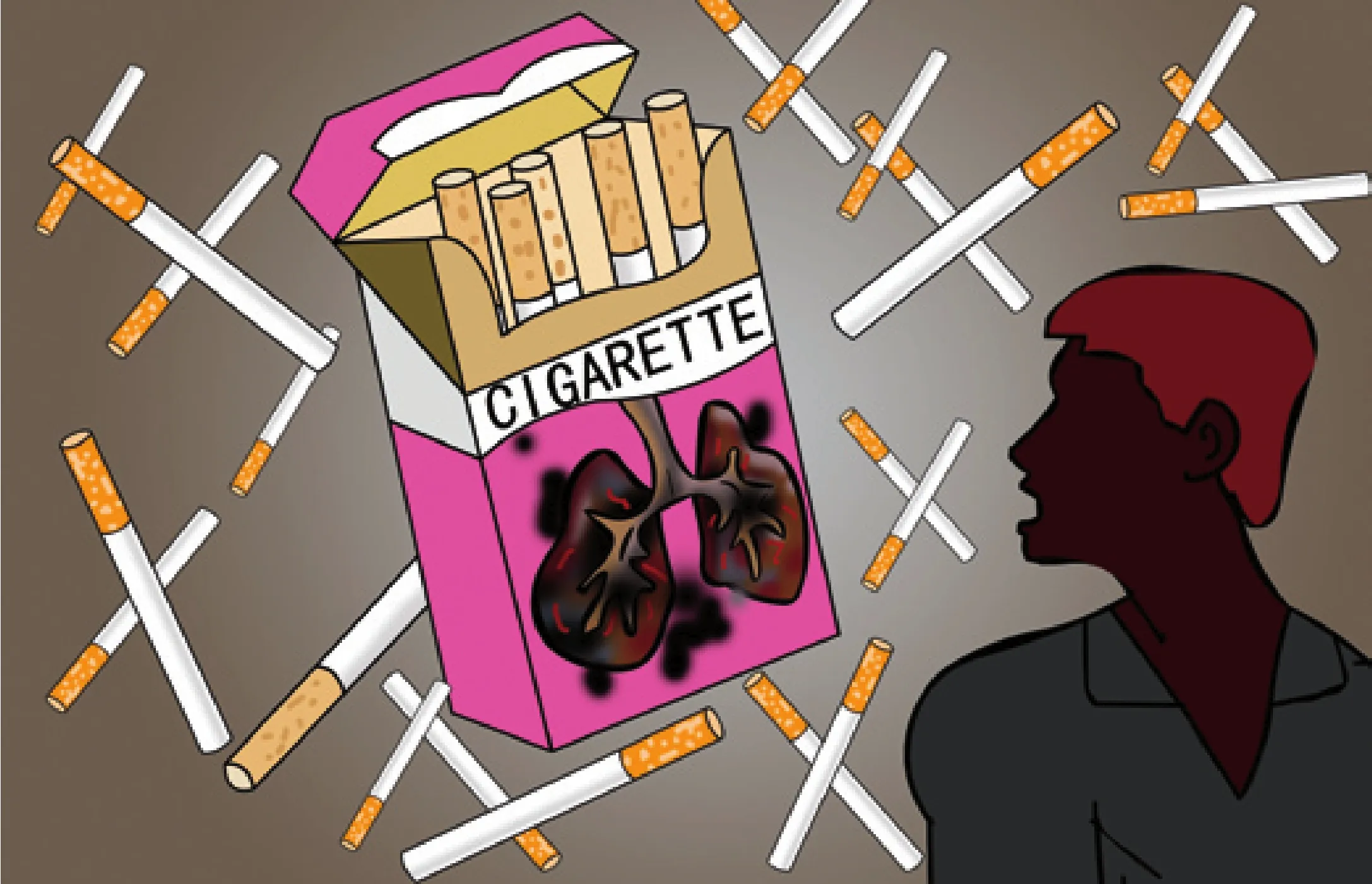Graphic Warnings on Cigarettes?
2013-03-15本刊编辑部
A survey was recently done in Beijing among more than 6,500 people, asking if health warning images such as black lungs and rotten teeth should be included in tobacco packaging to highlight the danger of smoking. The result shows that 85 percent of the interviewees support the idea.The survey draws attention of the public and arouses discussions. The following are excerpts of opinions:
Bi Xiaozhe (www.eastday.com):According to the survey result, extensive public support for warning signs related to smoking does exist. In July 2011, China’s Ministry of Industry and Information Technology promised to bring changes to current cigarette packaging. However, adjustments are still to be made, probably due to a conflict of interests.
Horrible pictures featuring black lungs and rotten teeth can do much to stifle the public urge to smoke. However, if large numbers stop smoking, tobacco sales and taxes will sharply decline, the industry being among the top tax contributors in China.
Take 2005 statistics as an example, direct and indirect loss resulting from smoking-related diseases came to between 227.5 billion yuan($36.1 billion) and 287.1 billion yuan ($45.6 billion), while tobacco-related tax revenues were about 200 billion yuan ($31.7 billion). Tobaccorelated disease costs basically swallowed up revenues.
In the third session of the Conference of the Parties to the WHO Framework Convention on Tobacco Control in the South African city of Durban, China was awarded the Dirty Ashtray Award for preferring pretty tobacco packaging to public health. While harvesting huge tax revenues, China is losing its image in the international community.
Li Yingfeng (www.voc.com.cn): China signed on to the Framework Convention on Tobacco Control in 2003, which clearly demands that all signatory countries cover 50 percent of packaging surfaces with warning text and pictures. However, in China, less than 30 percent of cigarette packs is utilized for this purpose.
According to a Canadian Cancer Society report released in November 2011, at least 63 countries had already required their respective tobacco industries to include graphic health warnings on packaging material, which is now a world trend. Nevertheless, China still lags behind in its own efforts.
According to China Health Ministry statistics issued in 2012, the country is home to more than 300 million smokers, and 52.9 percent of men smoke. In addition, 11.5 percent of local adolescents smoke. Given the context, the fi ght to curb tobacco use is a tough one. On the one hand, tobacco control slogans are shouted at full volume while on the other, implementing effective measures to address the problem is sidelined.
The industry has also greatly added to the country’s expenses on health care and social security, due to huge harm to both consumers and their families. It’s shortsighted to focus on tax revenues alone in the face of social loss.
Bin Bing (www.newshainan.com):Although 85 percent of interviewees support the use of graphic health warnings related to smoking, I personally doubt that such a plan would ever be implemented. Furthermore, public support is being derailed by the lack of of ficial backing.
In China, the Framework Convention on Tobacco Control took effect in January 2006,demanding obvious warning signs on tobacco packaging. However, the country’s 2013-15 national tobacco control plan does not include such an initiative.
It’s common sense that smoking is harmful to health. However, due to the lack of effective warnings, smokers care little about the impact of their actions.
In Canada, statistics show that nine months after warning signs were introduced in tobacco packaging, 58 percent of smokers came to


LI SHIGONG realize that smoking is harmful, 44 percent considered quitting and 38 percent decided to stop.
Tobacco control requires serious effort, still I doubt if the right sincerity exists to tackle the problems.
Liu Gensheng (Shenzhen Special Zone Daily): The high support rate in the survey shows that horrible warning images are welcome amongst the Chinese public.
In 2009, Huang Xihua, a deputy to the National People’s Congress, suggested it was time to stop beautifying tobacco use and raise awareness on the consequences of smoking. Following investigations, she found that smokers paid little attention to the harmful impact of tobacco due to “pretty”packaging, many even considering cigarettes the perfect gift.
In response to the calls for health warnings on cigarette packaging, the State Tobacco Monopoly Administration states that the reason for the lack of warning images on the packaging of tobacco products is that it is a consideration “based on China’s national condition.”
When it comes to China’s “national condition,” they seem to have forgotten the country has more than 300 million smokers, with more than 740 million people exposed to secondhand smoke. Public health is under serious threat. Every year, more than 1 million people die of smoking-related diseases.
Health should always come first. Although the tobacco industry has contributed huge tax revenues, this can never offset the loss it causes to people’s health. We need effective laws to promote warnings in tobacco packaging.The tobacco industry should be made to feel ashamed for maximizing profits at the cost of public health.
Li Fangxiang (www.dahe.cn): Over the past 50 years, research has revealed active and passive smoking to be among the major triggers for lung cancer, chronic diseases of the respiratory system, coronary heart disease, strokes and death. However, awareness on the effect of tobacco use remains limited.In some cases, offering cigarettes to guests is even regarded as an expression of hospitality in China. To some extent, shiny packages are playing a big role. Although warnings such as “smoking is harmful to your health”are included on Chinese cigarette packs,the words are often so small and obscure to make them next to useless.
As far as I know, by now, 44 countries have put health warning images on tobacco products. In Uruguay, such signs cover 80 percent of packaging, and in Britain, some pictures show the lungs of cancer patients while others reveal rotten teeth. In Denmark, warnings include pictures of black lungs and even corpses lying in mortuaries.
In the face of such disgusting images, resistance might well grow, even amongst hardcore addicts. It’s high time for China to also print graphic health warnings on tobacco product packaging. ■
